We warmly welcome Marcell Fóti, author of The Natron Theory, as our featured author this month. Marcell’s book examines the perplexing mystery of how the ancients could expertly navigate, manoeuvre, and position megalithic stones with remarkable precision. Through detailed investigation and experimentation, Marcell’s book uncovers a groundbreaking discovery that provides answers on how these enormous ancient structures bloomed around the world, revealing the astonishing achievements of ancient civilizations in a new, logical, and easily comprehensible way. In his article here, Marcell introduces the reader to some of his experiments that enabled him to discover an ancient recipe for casting artificial stones.
Interact with Marcell on our AoM Forum here.
Planetary Amnesia
When observing the gigantic megalithic structures of the distant past, modern humans cannot avoid the question: how on earth were these built? These appear to be utterly impossible constructions, even with today’s technology.
For example, the ancient Egyptians somehow managed to raise a granite obelisk weighing hundreds of tons into an existing temple’s courtyard, lifting it over the standing structures (such as Hatshepsut’s obelisk in Karnak). Or the ancients carved entire mountains into a single, monolithic, beautifully decorated temple (like Petra in Jordan or the Kailasa Temple in India). Meanwhile, in Peru, they crafted multi-ton stone blocks so precisely that you can’t even slip a sheet of paper between them.
And if that’s not enough, consider the Great Pyramid of Giza, built from over two million limestone blocks. The heaviest of these weighs 70 tons, and just to grasp how impossible this task is, lifting a single ton requires at least ten very strong people, each lifting 100 kg. So, for a 70-ton stone, you’d need seventy times that—700 people. But obviously, 700 people couldn’t even fit around the stone, let alone lift it. With that many strong individuals, you’d accomplish nothing; they’d just get in each other’s way, and that’s the end of it.
The other issue is timing. According to the official version, the Great Pyramid was built in just twenty years. Let’s accept that number for a moment and calculate how much time was available to place each smaller, roughly 2-ton stone out of the two million or so total. It comes out to less than five minutes per stone. That’s less than five minutes to perfectly position a multi-ton block, without delays, working non-stop, day and night, for twenty years straight. Now that is quite the accomplishment!
Even so, the twenty years could still be plausible, if…they used a different method for placing these gigantic stones.
The so-called “scoop marks” found on ancient megalithic stones worldwide seem to suggest that our ancestors could soften stones and scoop them like clay. The best example of scoop marks can be found in Aswan, at the unfinished obelisk in the quarry, but you’ll find similar marks all over the world, from Peru to India (Barabar Caves) to Sri Lanka (Sigiriya). In Aswan, we see this massive obelisk being worked on, left unfinished. But how on earth was this granite colossus carved out? Perhaps a giant simply scooped out the granite with a huge spoon. That’s it. No need to overthink it.
To these ancient astonishments, we could also add the more than 10,000 precision stone vases discovered in Egypt, which appear as if they were made using lathes—yet this would be impossible due to the protruding handles on the vases. Does this mean they had access to ancient lasers?
What all these marvels have in common is that they seem to have been created by a civilization following a completely different technological trajectory. How else could it be that, here in the 21st century, at the height of industrial civilization, we cannot successfully replicate or even imitate these feats?
Let me confess upfront: I do not believe in ancient lasers, helicopters, or anti-gravity. I consider these projections just as misguided as the 19th-century archaeologists who, influenced by their era’s strong religiosity, labeled every unknown artifact as a ritual object. These were not conclusions based on evidence but rather the result of cultural bias.
Similarly, today’s projections involve esotericism, mystical forces, dimensions, levitation, and miraculous frequencies. These are modern inventions—descendants of magic and sorcery—and no more real than Harry Potter and his wand. I say this knowing full well that vibration and “frequencies” are entirely ordinary, accepted methods for compacting concrete in modern construction—but not for making objects levitate!
“Wingardium Leviosa! Mobilicorpus!”
But if all this is nonsense, then what is the truth? How did our ancestors achieve these wonders?
Interestingly, the legends of indigenous Peruvian Indians come closest to a plausible explanation. They claim their ancestors could soften stones. And let’s admit it, if someone were to watch a video of my happily bubbling, simmering red granite pudding, they might reasonably conclude that I had managed to soften granite.
Granite Pudding, by Marcell Fóti, Download
Oops, I should have started this article with this: I can soften stones! Granted, it’s not actually softening—it’s an entirely different chemical process—but the result looks uncannily similar, as if I’d softened granite. From an ancient perspective, it would indeed seem like I’ve softened it, no question about that.
This situation is actually quite amusing, as I could keep everyone guessing endlessly about how I do it, and no one would even come close to the correct answer. It’s true magic.
Yes, I possess the knowledge and the secret, but no, it’s not something complicated—it’s as simple as can be. However, I won’t reveal this fantastic secret right at the start of the article. No way! Keep reading!
When I began delving into this question, I, too, had no idea what the solution might be—after all, if nobody knows something, by definition, nobody knows it. But as I dug deeper into the tangled web of mysteries, two things became increasingly apparent:
- The correct answer is obscured by all sorts of so-called expert nonsense, like the supposed invulnerability of granite or blind faith in mass spectrometry.
- The solution is ridiculously simple, yet somehow, no one has thought of it in thousands of years. How is that even possible?
So, where should we start? Perhaps with the facts.
In archaeology, we’re constantly told—even by myth-busters—that granite is an extremely hard material (true), and, therefore, it can only be worked by brute physical force, as neither acids nor alkalis can damage it. And if you can’t work granite with copper chisels, ancient lasers will do the trick.
But this notion couldn’t be more wrong. For instance, clay is nothing more than granite chemically etched by natural acids (mostly carbonic acid). Sure, it takes millions of years, right?
I admit, traditional aqueous solutions of acids and alkalis etch granite so slowly that the effect is imperceptible on a human timescale. But there’s another substance that can break it down quickly and effectively.
Did I discover this substance? Not at all. It’s a well known material, called natron. A type of salt—not the usual table salt, but the kind used by the ancient Egyptians for various purposes, including mummification.
When heated above 851°C, natron beautifully etches granite—or rather, one of its components, quartz. And once you break down the quartz, the granite falls apart. (Up in the picture of the pot, I’m not using natron. After all, you can’t hit 851 degrees Celsius in a pot on a simple kitchen stove. So, are there actually more than one easily accesible, everyday substances that can chemically decompose granite? Could it be? Whoa!)
What’s left? This is where the story takes an interesting turn.
The decomposed granite breaks down into colorful grains—and water glass! Hurrah!
For the technically inclined, here’s the chemical reaction:
- Na₂CO₃ + SiO₂ = Na₂SiO₃ + CO₂
- Molten natron + quartz = water glass + carbon dioxide gas
Okay, but what exactly is water glass?
Water glass, or sodium silicate, is an incredibly versatile material. It’s used as a paper adhesive, as well as for preserving eggs. Additionally, it renders concrete fire- and water-resistant, making it a popular choice for fireplaces. Beyond these applications, it’s also known as food additive E550, commonly found in pudding powders as an anticaking agent. So, with that, we’ve effectively answered the question of whether it’s a toxic substance or not.
But for us, its most important property is that it serves as a key substance for creating artificial stones: geopolymers.
If you ask a modern geopolymer expert what water glass is, he’ll tell you this: “Oh, water glass is just the cornerstone of artificial stone production—a key ingredient.” Fascinating!
So, did the ancient masters, who clearly decomposed granite (as evidenced by scoop marks worldwide), realize what they were creating in the process? Or did they do it mindlessly, driven by religious frenzy?
Assuming our ancestors were fools is a dangerous detour in historical thinking. I assert they were no less intelligent than you or I. True, they didn’t know the periodic table, but then again, neither do most modern bricklayers. Does that stop them from making concrete? Of course not.
If we follow this line of reasoning—that our ancestors weren’t completely stupid—they must have eventually figured out how to turn water glass into stone. How do we do it today? By mixing it with fired clay (metakaolin) or industrial by-products (like fly ash or furnace slag). The result hardens into rock.
Voilà!
Did people in the past have access to similar waste products, such as wood ash? I dare say they did—especially wood ash. And if you mix fresh wood ash with water glass, voilà again: artificial stone.
This isn’t just a theory; it’s a practical, proven technology. Sitting on my desk right now is a miniature Moai statue that I created by dissolving granite, boiling down the resulting water glass, thickening it, and mixing it with wood ash (and gravel). I poured the mixture into a silicone mold I bought online, and the resulting material is waterproof, fireproof, frostproof, impact-resistant, and pressure-resistant. In one word: stone. A dark, “volcanic” stone tinted gray by the ash.
I also happen to have the One and Only, The Real Excalibur, on my desk. (In fact, I have five of them.)
So, how did ancient builders create precision walls from multi-ton stones using primitive tools? By casting them. Not into molds, as that would only defer the problem of lifting giant stones, but directly in place, into the wall.
This immediately answers several seemingly impossible questions:
- How did our ancestors lift multi-ton stones? They didn’t—or rather, they did it one bucketful at a time. How do we lift the massive concrete slab of a modern roof? By the bucketful.
- Why are all the stones different shapes? Because they didn’t use uniform molds. They poured one stone next to the other directly into the wall.
- Why don’t we find molds anywhere? Because there weren’t any—just planks or animal hides to form simple barriers.
- How did they achieve such incredible precision, with stones fitting so tightly together you can’t slip a sheet of paper between them? By casting the stones in place directly against the previous stone.
At this point, the big question is: how did people figure this out all over the globe? My book, The Natron Theory, explains, in detail, how anyone playing with fire would inevitably discover this. No messengers or teachers were necessary for granite to be decomposed from Sri Lanka to Stonehenge to Cusco. If external help was needed, it likely came from a figure like Prometheus—because without fire, none of this works.
And why did the ancient Egyptians refine this technology further and develop “artificial granite”? Why there and nowhere else? And by the way, what on earth is artificial granite? Isn’t that impossible?
Well, it’s more accurate to call it fake granite. Creating a material with colorful quartz grains embedded in it, as seen in natural granite, is indeed impossible without the conditions found deep underground. But fake granite? That exists—just look at your kitchen countertop. Its binding agent is epoxy resin.
In ancient fake granite, the binder was—a form of glass. It’s transparent like quartz and almost as hard. It’s easy to confuse the two since they’re made of the same material: SiO₂.
If someone analyzes ancient Egyptian granite statues, assuming they’re natural granite, and uses standard tools like an XRF device to study their structure, they’ll find that the fake granite is also 75-77% SiO₂. “Therefore,” they’ll conclude, “it’s natural.” But the SiO₂ isn’t quartz—it’s glass.
And how do you make glass at room temperature? The first answer is, “You don’t.” The second answer, however, is: from water glass. Over time, when exposed to atmospheric CO₂, water glass slowly converts to amorphous silicon dioxide—otherwise known as glass.
Interested in the chemical reaction? Whether you are or not, here it is:
- Na₂SiO₃ + CO₂ = Na₂CO₃ + SiO₂
- Water glass + CO₂ = natron + amorphous silicon dioxide, aka glass
Compare this to the earlier reaction. They’re mirror images of each other. What we achieved with fire (water glass + CO₂) reverts at room temperature (almost) to what it was: instead of quartz, you get glass.
This process happens incredibly slowly because the CO₂ content in the air is so low. The material remains water-soluble until the transformation is complete—potentially for up to six months.
That’s what the 19th-century enthusiasts who coated the Notre Dame and the British Parliament in water glass discovered the hard way. London and Paris don’t have six-month-long dry spells, so it all washed off.
In Egypt, rain wasn’t a concern for months, but even there, relying on plain water glass was risky for constructing entire buildings or huge statues outside. That’s why some ancient genius figured out how to speed up the transformation of water glass into glass.
Have you seen my video where I squeeze water out of stone? That’s how. Yes, I can draw water from stone. It’s just the way it is—I can’t help it.
Bringing Forth Water from Stone, by Marcell Fóti, Download
There’s only one type of stone left that we still can’t reproduce artificially: the well-known, pure white limestone used in the pyramids. It’s impossible to make because its formation requires millions of years and immense pressure.
Then… what exactly is this I’m holding in my hand?
Artificial Limestone, by Marcell Fóti, Download
If we’re already talking about dogmas, the limestone dogma is technically true: millions of years, seabeds, immense pressure, blah blah. I can’t create limestone. What I can do, however, is cast new limestone from natural limestone debris or crushed stone. And it’s ridiculously simple. All you need is… natron!
And with that, the circle is complete. Natron is a miraculous substance that, through chemical reactions, can interact with every natural stone type around us and always produce… stone.
That’s why I titled my new book The Natron Theory. It’s worth a read, though I must warn you, it’s nearly 400 pages long. I promise never to do this again. Sorry.
Oh, and one more thing: the megalithic nubs. This is what a megalithic nub looks like: those small protrusions at the bottom of the (cast) stones. What are these? And who was foolish enough to carve 1 inch of hard stone from the whole surface of the giant stone just to get these silly protrusions?
While experimenting with artificial limestone in my lab, I noticed that no matter how little water I added to the mix, even the smallest amount was too much. As the mixture set, this excess water would be released, becoming useless and turning my stone into a soggy mess. If I didn’t create a hole at the bottom of the mold, my stone would turn into pudding and slide right off the wall.
Wherever you see nubs, you’re dealing with artificial limestone or granite casting—both release water as they set.
And the nub is always located at the bottom of the stone. Gravity doesn’t joke around—if you don’t drill a hole at the bottom, the excess water won’t drain. If the nub isn’t on the bottom, it means the stone was rotated. During casting, the nub was at the bottom. I provide further evidence for this in my book and on Twitter (or X, as it’s now called).
That’s natron theory in a nutshell. But of course, it’s much more than that—a truly thrilling intellectual journey through time and space. That’s my self-promotion done, let’s move on.
What was the second point again?
Ah, yes. How is it that these ridiculously simple techniques have left no mark on the present-day Christian, Chinese, Indian, or any other civilizations still flourishing today? None of them know anything about this. Collectively, we all believe that artificial stones or rocks can only be created using concrete.
And if, by chance, the ancient Greeks did know about it (look at the famous Naxos Portara, with its nubs), how did this knowledge disappear? Mixing two natural substances creates a stone adhesive: dissolve laundry detergent (natron) with wall paint (quicklime) in water, and you get stone glue. How could this knowledge be forgotten? We haven’t forgotten how to make bread, have we? So, did the Greeks not know this after all? Then who built this gate? Or what are these nubs doing here again?

Naxos Portara, photo Manfred Werner (Tsui) (CCBYSA4.0)
BTW: most of the stones of the gate were cast in a (wooden?) mold, nubs down, then rotated into this position to avoid wobbling on each other. However, the two columns were cast in place, in this position, with a single nub at the bottom. I think it would have been too heavy for them to lift those after casting. And then, the lintel was also cast in a box, nubs down, then lifted there. I guess they had no other choice than to cast the lintel separately, even if it was also super heavy. That’s my uneducated guess.
Granted, the knowledge of hieroglyphs died out in Egypt even though the country remained inhabited and civilized. Still, writing was only known by a relative few. But stone masonry? That was universal knowledge. How could it vanish?
And if I add that both granite decomposition and limestone creation can easily be discovered by accident, how is it that this “happy accident” has never occurred for any of the currently known civilizations?
Somehow, the present civilizations are entirely steeped in the dogma of “it can’t be done.” And what can’t be done, we don’t even try. It’s human nature. But where did this doctrine—that “artificial stone is impossible”—originate? Who spread it across the world?
Here’s how I imagine it: Moses went up the mountain to receive the Ten Commandments. After he had carved all ten and was about to descend, the Lord turned back, just like Detective Columbo does, and said:
“Oh, and one more thing! Artificial stone can’t be made.”
And that’s how it happened.








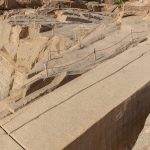
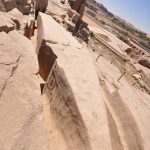
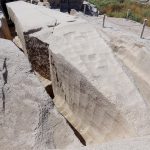
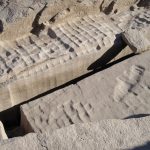
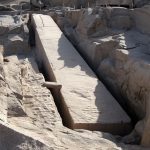
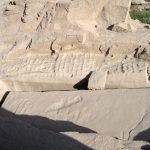
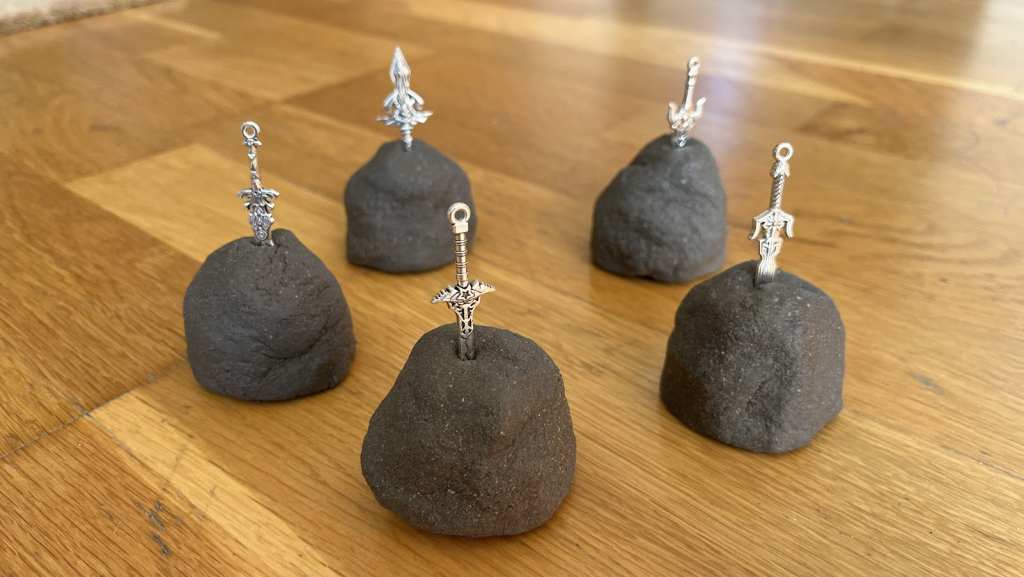
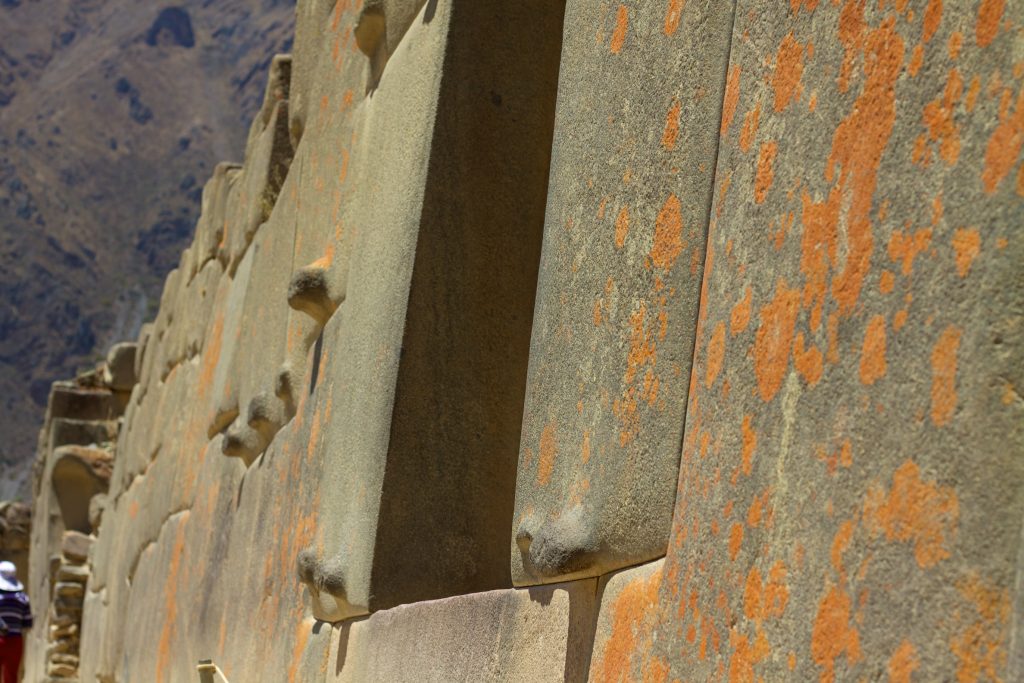
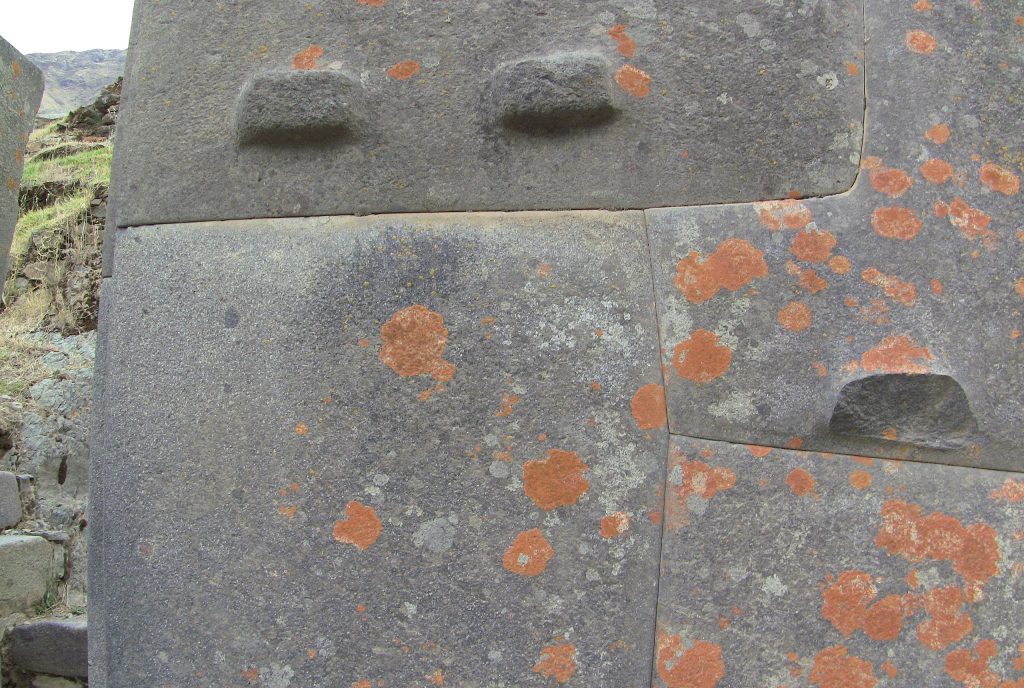
Hello, a suggestion, why don’t you investigate the highest lake in South America, Lake Titicaca in Peru, whose pre-Inca cultures were formed after the universal flood and legends report the departure of two gods, man and woman who were founders of Tahauntisuyo and branches throughout Peru, and whose real antiquities were 10,000 to 8000 years old such as Caral, Nazca lines, Kuelap, Choquequirao and Machu Pichu, with current antiquity meters and not obsolete measurements of ancient archaeologists. Peru is the cradle of civilizations in all the Americas.
You won’t believe this: I was at the lake Titicaca and all over Peru as a clueless tourist a few years ago when I knew nothing about these things and couldn’t care less. How dumb I was! I definitely need to go back one day to investigate EVERYTHING!
For anyone out there, this is not speculation or unproven science. A friend of mine and I ordered some of the Renca International fly ash based geopolymer mix, it worked as directed, and we were able to make grey rocks in a mold that dried or catalyzed in about 9 hours. This is absolutely real. Occam’s razor says the simplest idea is usually the correct one. These materials are and were just laying around for our ancestors to find and use. No special I dustry needed to support it’s making. Amazing we missed it for so long.
I have been to Wadi Natron and have read similar arguments about softening stone. I also know that granite is more porous than people expect. Countertops need to be sealed. Your hypothesis is extremely interesting. I point out that the satellite pyramids on Giza are filled with sand not stone blocks which may say something about the big pyramids construction. The megalithic nubs may be lifting points for wooden poles used to lever the blocks into position. I look forward to a counter argument. Thank you.
Hi! I agree on most things, but not when it comes to the nubs. My stone-casting experiments have shown that the nubs are there to drain excess water. Since these mixtures are not hydrates (unlike traditional concrete), the water used for mixing becomes entirely redundant during setting—it precipitates out and needs to be removed.
As flawless, convincing and elegant as the copper chisel and pounding stone -wielding slaves hypothesis used by Government-backed academics and authority figures may be, I have to say, this amateur effort by a mere unlettered civilian posted here on the global hub of pseudopscience website, does seem to give the former a run for its money.
And, it is a lot of money, all that tenure for the past 150 years, for the effort and brilliance of the “Pounding Stone and Copper Chisels, You Racist” hypothesis, yet to produce a single artefact comparable to the legacy.
I wonder, can we, the general, non-academic, public from which the author springs, who pay taxes which pay for academic theories (such as, “it was copper chisels and pounding stones, you racist!”) that fail to explain anything whilst also failing to predict discoveries (like Gobekli Tepe, etc.), can we perhaps draw off some of that tenure and redirect it towards chaps like Mr. Foti? For something this far-reaching, a lost branch of technology, should be given honorary Ph.D’s and a generous pension for life by the entire human race, literally rediscovering lost wizardry, missed by every nerd and geek for the past five millennia.
Hi,i can appreciate your system of forming stone by a chemical reaction,but why would you use that chemical reaction to relieve stone from 50 ton to a thousand ton,would you not break the stone up and formulate on site?
Just imagine how concrete slabs are ‘made.’ No one carves them out, let alone hauls them around. They’re poured on-site, and that’s it. That’s the secret—on-site casting. Instead of lifting gigatons, you lift buckets. It’s just masonry work.
Joseph Davidovits preceded you by decades…perhaps you know of him ?..I am SURE you do ;
everyone interested in exploring this very novel theory ( now actually Proven ) should read
Davidovits ….
Absolutely! I would be nowhere without his results! In fact, I mention his research shortly in my book. Both his artificial limestone formula and bis geopolymer science were invaluable resources for me to build on.
That’s the solution to not one, but many, mysteries. Pyramid construction (including boxes and lintels above chambers in confined spaces), nubs, polygonal masonry, vases, precision statues, scoop marks, just off the top of my head. And to think archaeologists were too busy writing woke cancel letters and making toxic clubs, to do anything even a fraction as useful.
We need more men like this. Actual leaders.
Now, please solve:
– crop circles
– homing pigeons
damn straight. bingo bango bono. no miracles required.
I hope you will someday come and test or figure out while visiting the thousands of mysterious nuraghe towers in my Sardinia island.
I hope one day I can do that. It’s not that far from me, Europe is Europe.
Marcell! Bravo! This looks utterly fascinating, and I look forward to reading the entire book. One quick question:
I have been investigating an historical mystery that has resulted in some 400 large blocks of “concrete” that have been C14 dated to a period long before concrete technology existed anywhere on earth (ca.12 kybp).
If these blocks were produced by the method you describe, could that be established by testing the concrete? What would we look for?
The binder. And this is why it is so hard to do. You need to analyze the 2-4% binder in the haystack of 96-98% natural stone rubble filler. We are working on a definitive method to do that but it’s a hard problem.
Now that Marcell has demonstrated that all these things were easily poured from ground dissolved and heated stones rendered liquid and then reset, could we nominate the so-called “schist disc” as a possible immediate candidate for examination as to whether it is composed from this kind of thing, essentially two-hour pour-and-sculpt window before it sets hard, a geopolymer, and not carved from hard natural stone? Possibly ancient virtuosi with experience of generations would have known tricks for lengthening the sculpt time or otherwise controlling that. The disc is supposedly (we are told by The Authorities) carved from metamorphic schist, but of so impossibly fine, complex and precise a design as to be inexplicable as a carved object from such a hard stone (Mohs 4-6, depending on quartz content) with known tools and knowledge at the supposed time it comes from, or with ours.
However as essentially a piece of geopolymer pottery, of the sort you have rediscovered, it would be far easier and less impossible to make. Still mysterious and incredibly well done. Just less like sorcery, and more like, well, alchemy I guess. Alchemists were all about solve and coagula, right? Egypt was Khem? What could be more chemically impressive than making basalt your bitch?
It would also explain the desert – to fuel all the burning required for the process of liquefying millions, if not billions, of tons of all kinds of stone, over countless aeons, the Egyptians would have to have cut all the forest far more so even than they would need to for normal purposes, cooking, building, etc. The discovery would have absolutely wiped out nearby forests. Which explains, possibly, Easter Island as well as, possibly, the Sahara. And elsewhere?
So many things are rendered clear, if a technology so awesome as this, at least one of the elephants in the room of archaeology, is taken into consideration. It is more like a herd of mammoths in the room, and wooly rhinos, the works. Thankfully one of them -the technology of stone manipulation with natron- is coloured in now so we can get a better view not just of it but of the rest of the scene.
An industry like this must have dominated the cultures that practiced it. To have stories about ancient times that omit this, is to have a distorted and incomplete rendering of our own story. The miracle or magic of making hard stone obey your imagination like this, was probably likely at least a trade secret if not a sacred taboo and state secret for those who had the know how.
As well as all the actual phenomena that puzzled us until right now, it explains the motivation – whether slaves or leisured artisans made it, they did it with buckets, not giant stones. Less whipping would be needed, and less insanity on the part of the drivers. So it was done by magic, after all, just not the fantasy kind. The result would have made the effort worthwhile, inspiring, and otherwise (without collective effort) unachievable.
Time academics all stopped accusing the ancients of their own ignorance. Big gaps in our grasp of reality can get filled just like this. Like a mould full of granite! Thank you Mr Fóti!
Absolutely! I’m planning to write a book about the formation of the Sahara… I’m not kidding!
Brilliant. However, my untrained brain wishes to know just how much mixture needed to be produced and how much weight of mixture is produced. Logic would say the same weight as is displayed in tons per block – but perhaps the mass changes? I don’t know. Anyway, a seemingly excellent hypothesis to my simple mind; and indeed the only plausible way (pouring and casting) that had ever popped in my head through the years. (But how to do so was the question.)
Also, I should say that although there doesn’t need to be a common, connective theme in pyramid-building worldwide, I think that with all the other connections it is most likely the case that there was a knowledge transferred from place to place. Interestingly, there is a belief in a lost tradition of building through the death of the master mason.
Actually, maybe this also explains the otherwise “fantasy” notion, so common in folklore worldwide, of people, animals or monsters being turned into stone or turned into a pillar of ash or of salt. Apart from the bible it also exists in so many stone circles, dolmens and monoliths and megaliths, that local lore has it that such and such a stone is X turned to stone in a story. With natron, this is possible.
Perhaps their ashes were ground into the geopolymer? If you are adding wood ash anyway to make the stone, a little ash from a creature or person would bind them in place forever. A great gravestone idea. Is this another reason they also used it in embalming? You can turn grandma into a statue?
Is it naive to think this means some stone can, in fact, be carbon dated, as it would contain carbon from the wood and or entity ash?
So. The secret magic that could soften stones and produce all the unexplained masonry in global antediluvian cultures,
… the secret that eluded academic archaeologists for two centuries, consists of …
… “food additive E550, commonly found in pudding powders as an anticaking agent.”
The facepalm is heavy with this one.
🙂
Very interesting.
Have you seen the movie pyramid k?
It seems to have similar propositions but it mainly differs in that it proposes that giant solar lenses were used to cast the granite which obviously doesn’t exactly work if one wants a granite look as the resulting product would look like melted granite, i.e., lava like, aside from the heat that it would produce near by… Your proposition seems indeed much more elegant if it indeed works (I’m no chemist :p).
ha! this is so incredibly AWESOME. i’ve always felt that they were ‘poured’ or ‘molded’ with softened stone and not carved.
incredible article, thank you!!! 🙌
I like this idea, it makes sense for most of the structures. However, there are the vases, poured maybe but why no 2 the same if a mold was created, they are similar style but not much else, why wouldn’t an artist have sold molds and those been found? especially with the statues which are obviously also somehow molded as they are identical in both left to right and many of each kind were made. creating or molding stone is only one answer I would conclude, so what other lost knowledge are we missing in that mainstream wants to maintain our ignorance by saying what we are doing now is the only and best way which of course is false. we are only trying to guess at what we lost. after all imitation is the best form of flattery and you can tell later peoples had no idea how to do what had been done. was what was pre flood or post for those that are creation minded.
Vases could be spun on a wheel like clay, no mould needed. With stone as soft as plasticene, copper tools would, indeed, be sufficient to carve with absolute precision, no force needed.
Think of the liquefied rock as clay, which hardens without firing, into stone.
And the mould would absolutely make sense for the reproduced statues (like the rows of ram-headed sphinxes in Thebes, for example) but less so for one-offs, monumental or “magical” ensouled statues or whatever. My guess.
Then the real question is for lost knowledge how long has the “wheel” been in use as either a potting wheel or wagon transport. even at 6000 yrs ago I refuse to believe the wheel wasn’t in use which would explain transportation and a lot of creative pottery. as for softened rock as clay wouldn’t there be a heat issue if using your hands to mould or even if using metal tools, I also refuse to believe they were limited to copper tools. One day I’d really like without judgement someone to piece together the bible, the “forbidden books” i.e. Enoch and jubilees etc., then using a young earth world flood and the supposed knowledge granted by the fallen to man and then see what kind of past we come from and what all we have yet to regain. just curious as scientists are determined not to believe in the Bible and Christians are almost as determined to not give credence to what has been unearthed. take personal issues aside and piece them together I think would provide a much fuller picture in which then ppl could choose what all they really wanted believe, or not in regards to Aliens, lost knowledge, etc.
Well said. Yes, I always found it silly when academics categorically state that this or that culture “didn’t have the wheel”, at a certain time, because they have failed at finding anything they recognise from that culture and time. Wheels are just sections of logs or literally the first thing you make out of clay or plasticene by rolling a ball and squashing it. A log is a wheel. Any round thing is a wheel. It is utterly absurd to think that people with functioning limbs and senses were unaware of spinning or rolling being a thing. They had rings but not wheels? LOL. A ring is a wheel. And yes agree with the rest. I’ve studied the history and philosophy of science in depth for decades. It’s hilarious. Each militant atheist materialist is a mirror image of militant fundamentalists of religion and twice as disingenuous and unconvincing. Neither care for truth, reality, or their fellow creatures. All ego and bluster to prop up delusions, even very expensive, detailed delusions. The Bible and all legendary or ancient historical stories are part of the legacy of knowledge and needs to be considered and not dismissed. Even Lord of the Rings is legacy of knowledge, how else could Tolkien have known Hobbits (homo floriensis) have disproportionately large feet (hundreds of skeletons now found, all have large feet!). No mythical creature had large feet, not even Hobbits (no pre-Tolkien references exist). Tolkien gave them that specific feature, and then it shows up for real in hundreds of skeletons three feet high. Not in myth, but indonesia! So we had halfling cousins with huge feet, for real, discovered a century after he thought he invented them. This makes him more successful than every archaeologist, paleontologist, biologist and other – ists you can name. What’s the science for that called? Fantasy! How did he do it ? Enchantment and daydreams! Hmm, maybe those “unscientific” old tales have more reality to them than all the latest tasteless nonsense from overpaid materialist academic “scientists” combined.
I have been pondering the question of poured product for years. I contacted Prof. Davidovits about 17 years ago when I discovered his theory. He kindly told me about his experiment (Ari-Kat)and I was tickled to death to find a professional that could verify my thinking. Today, I am once again tickled to death to read the Natron Theory which further adds to my knowledge base regarding the means for pouring the product. Egyptology and the professional –“ists” out there, should be totally ashamed of themselves for perpetuating the mega lies. No wonder people are so dumbed down these days.
Perhaps this technique explains the raised images on the columns at Göbekli Tepe?
Marcell needs to sit Ben down over a cuppa and educate him on “how granite works”
Please visit Carter Caves in Eastern Kentucky. During the revolutionary War with England, gunpowder was produced for the the States. The residue from extracting Salt petre from bat guano was returned to the caves, stacked on each side of the cave till it was 5′ high. A path was left near the center of the cave to provide access further back into the cave. It quickly set solid and today, it is solid as stone.
Watch the documentary on the Barabar caves https://www.youtube.com/watch?v=iF6qv1CC5_4
Not even a “lost” technology. It has never been out of use.
Just lost to academic archaeologists. Not only wilfully ignorant of geology, they are ignorant of chemistry and such easy techniques as this. Imagine how much closer we could be to understanding the “anomalies” (caused by official ignorance) if the “experts” actually had science instead of crappy dogmas.